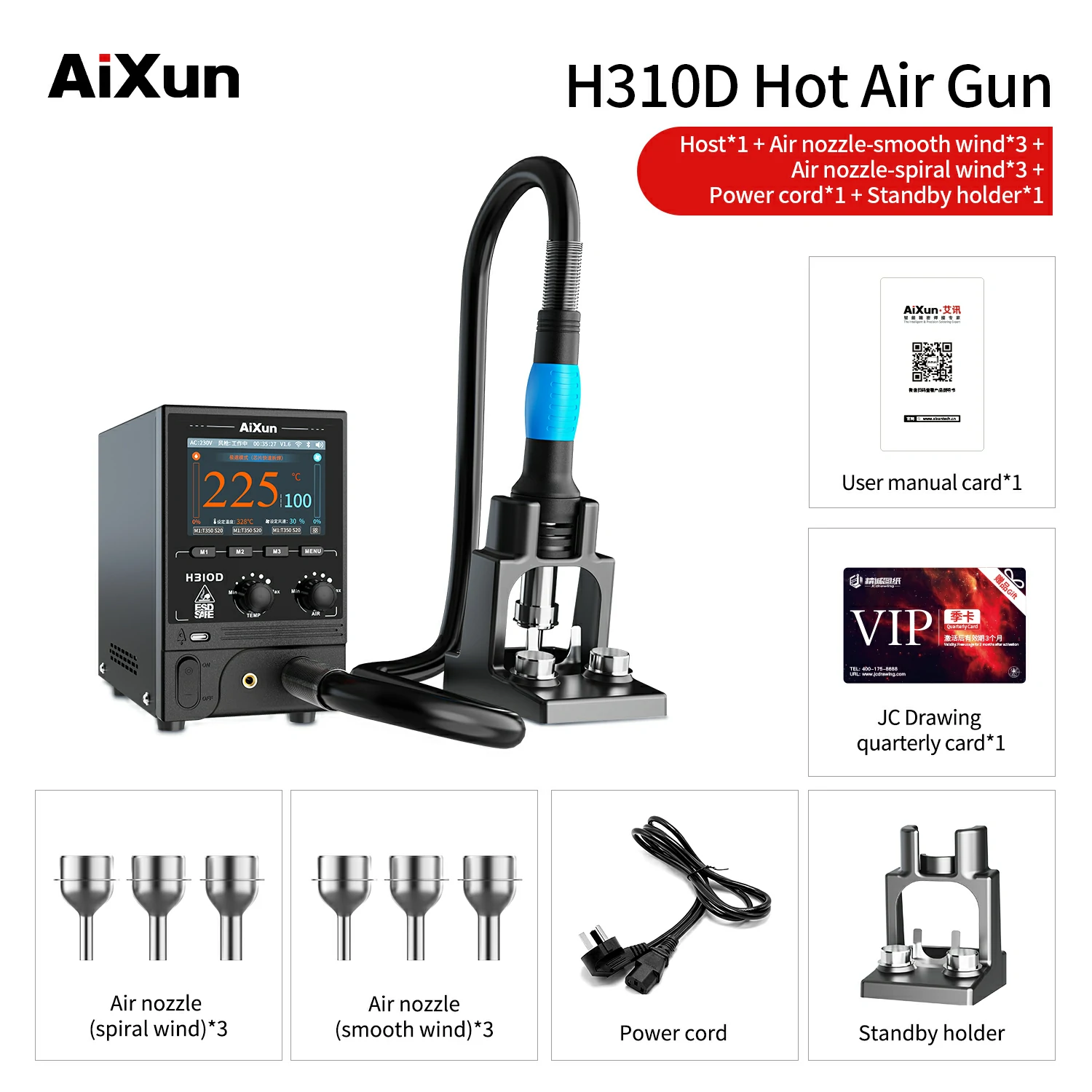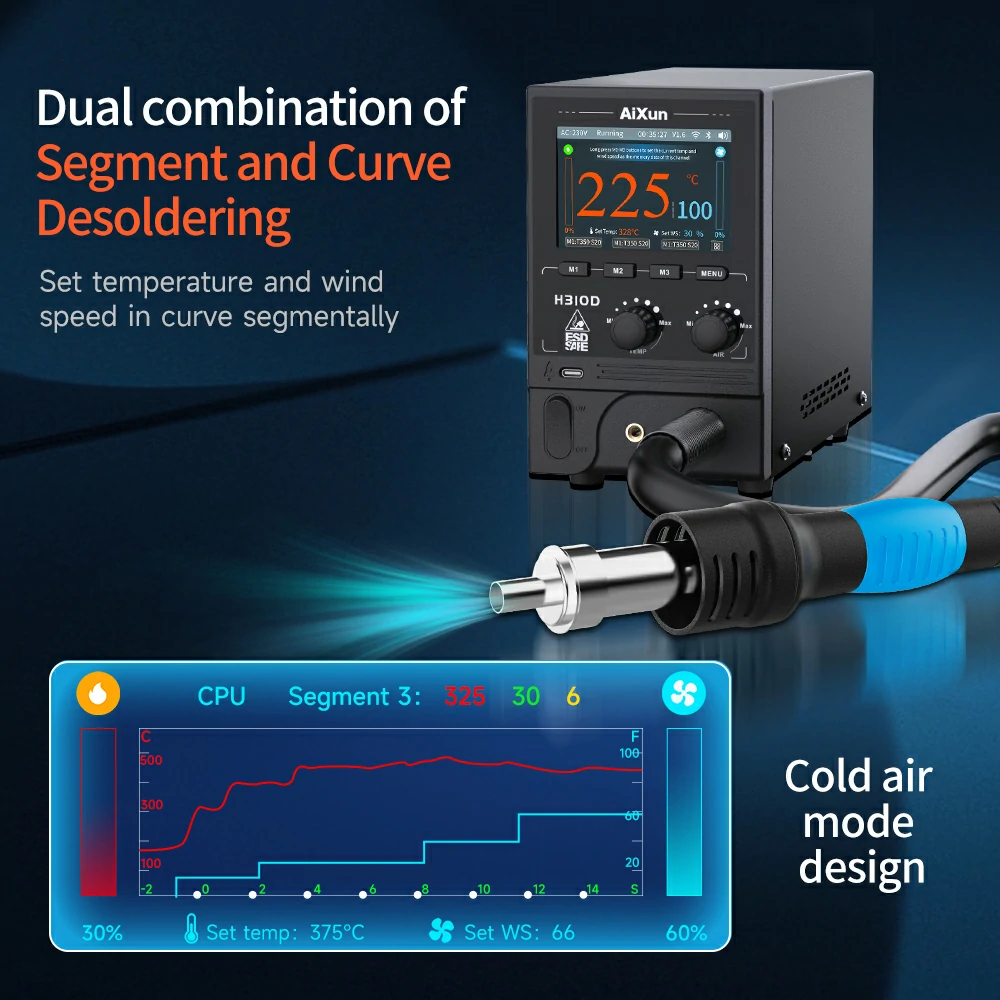
Rework station, also known as rework systems or rework tools, are essential in the field of electronics manufacturing. They are versatile devices that play a crucial role in repairing, modifying, and reworking electronic components and printed circuit boards (PCBs). In this article, we will explore the common applications of rework stations and how they contribute to efficient and reliable electronics production.

A rework station works by utilizing a heating system, such as hot air or infrared, to apply controlled heat to electronic components and PCBs. The temperature is adjusted using a temperature control feature to ensure safe heating. The heated area softens the solder, allowing for component removal or placement. The station often includes various interchangeable nozzles or tips to match different component sizes and shapes. Additionally, a vacuum system is often integrated to aid in the removal of components by applying suction once the solder is molten. The rework station allows technicians to precisely control the temperature, airflow, and other settings through user-friendly interfaces. This combination of features enables precise soldering, desoldering, and component rework in electronics manufacturing and repair.
To ensure safety when using a rework station, follow these essential tips: wear protective gear like heat-resistant gloves and goggles, work in a well-ventilated area, control the temperature within the recommended range, maintain a clean workspace free from flammable materials, handle the tool with care to avoid burns, power off and unplug when not in use, and seek proper training. Always refer to the manufacturer's safety guidelines and familiarize yourself with the specific features of your rework station.
Learn more >>> 5 Essential Safety Tips for Using a Hot Air Rework station
1. Precision Soldering and Desoldering:
Rework stations excel in precise soldering and desoldering tasks, ensuring accuracy when working with electronic components on PCBs. They provide technicians with control over temperature and airflow, making it easier to safely remove and replace components without damaging the surrounding circuitry. This capability is vital in industries where PCB rework and repair are frequent.
2. Efficient Component Removal and Replacement:
During electronics manufacturing or repair processes, electronic components like integrated circuits (ICs), connectors, resistors, capacitors, and surface-mount devices (SMDs) often need to be removed and replaced. Rework stations equipped with advanced features allow technicians to handle these tasks efficiently. Controlled heating and vacuum capabilities ensure seamless component removal and placement, minimizing the risk of thermal damage and improving productivity.
3. Expertise in BGA Rework:
Ball Grid Array (BGA) packages, which have densely packed solder balls, pose unique challenges in rework operations. Rework stations with specialized tools and techniques are designed to handle BGA rework efficiently. They offer precise temperature control, enabling safe removal and replacement of BGA components. These stations ensure accurate alignment and reflow of solder balls, preserving the integrity of the PCB assembly.
4. PCB Repair and Modification:
Rework stations are invaluable when it comes to repairing damaged PCBs or making modifications. They facilitate the repair of broken traces, lifted or damaged pads, and other PCB-related issues. Engineers and technicians can rely on the tools and temperature control provided by rework stations to fix circuitry problems effectively. These stations also support modifications and adjustments, allowing for iterative prototype development without the need for complete redesigns.
5. Reballing Capabilities:
Reballing, the process of replacing solder balls on a BGA component, is a complex task that requires precision. Rework stations equipped with reballing kits excel in this area. They can remove old solder balls, clean the BGA component, and apply new solder balls with accuracy and reliability. This ensures the restoration of functionality to BGA components and avoids the need for costly replacements.
6. Efficient SMD Rework:
Surface-mount devices (SMDs) are commonly used in modern electronics, and rework stations play a vital role in their handling. With advanced features and specialized soldering tips for SMDs, rework stations enable technicians to remove and re-solder small components like resistors, capacitors, and transistors with precision. This enhances productivity and ensures high-quality repairs and modifications.
7. Advantages in Thermal Management:
Rework stations incorporate various heating and cooling features, such as hot air reflow, preheating, and infrared heating, which are crucial for thermal management tasks. They assist in the removal of heat sinks, application or removal of thermal paste, and troubleshooting temperature-related issues. By effectively managing temperature, rework stations contribute to the reliability and longevity of electronic devices.

The answer is yes. The H310D hot air rework station, recently released by AiXun in May 2023, is an innovative and smart tool revolutionizing the rework process. It stands out as the first smart hot air gun that supports segment and curve desoldering. What sets it apart is its built-in technical desoldering parameters, which can be easily revised, recalled, saved, and added by users. This functionality allows users to create their own exclusive database, enhancing efficiency and customization in rework operations.
With its advanced technology and user-friendly interface, AiXun H310D offers precise temperature control and adjustable airflow, ensuring optimal heat distribution for different components and PCB. The station is equipped with intelligent features that streamline the rework process and improve overall productivity.
 WhatsApp
WhatsApp